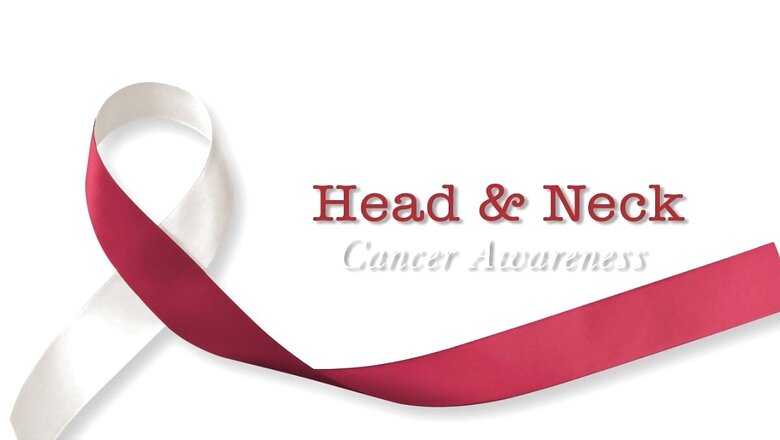
views
Head and neck cancer is a major health issue in India, responsible for approximately 30% of all cancer cases in the country. With nearly 200,000 new cases diagnosed annually, the high incidence is attributed to various prevalent risk factors.
By Dr. Ankur Bahl, Senior Director – Medical Oncology & Haematology, Fortis Hospital, Gurugram, and Dr. Vineet Kaul, Consultant, Head and Neck, Surgical Oncology, CK Birla Hospital, Gurugram guide us through:
Symptoms of Head and Neck Cancer
Dr Bahl highlights that common symptoms include:
- Persistent sore throat
- Frequent headaches
- Hoarseness or voice changes
- Pain when chewing or swallowing
- Pain in the upper teeth
- Facial numbness or pain
- Neck pain
- Trouble breathing or speaking
- Lumps in the throat, mouth, or neck
- Persistent earaches or infections
- Nosebleeds
- Bloody saliva or phlegm
- Sores that don’t heal
- Frequent sinus infections
- White or red patches in the mouth
- Swelling in the jaw or face
Dr Kaul adds that additional symptoms can manifest as:
- Ulcer that does not heal within 15 days
- Problems fitting dentures
- Reduced mouth opening
- Swelling inside the nostril
- Swelling around the cheek
- Bulging of the eyes
- Swelling under the ear or chin
- Swelling on the head or scalp
- Hearing loss or ear pain on one side only
Risk Factors for Head and Neck Cancer
Dr Bahl points out several risk factors, with tobacco use being the leading cause. The high rate of tobacco consumption in India significantly contributes to the incidence of these cancers. Other major risk factors include excessive alcohol consumption and infection with the Human Papillomavirus (HPV), which is increasingly linked to oropharyngeal cancers among younger adults.
Additional risk factors noted by Dr. Bahl include:
- Weakened immune system due to HIV or major surgeries
- Exposure to harmful substances like asbestos or pesticides
- Radiation treatment for other tumors
- High consumption of salt-cured foods, increasing the risk of nasopharyngeal cancer
- Genetic factors such as Fanconi anemia, especially when combined with tobacco use
- Poor dental hygiene, leading to periodontal disease and oral cancer
Dr Kaul emphasizes the occupational hazards contributing to the risk, such as exposure to wood dust, asbestos, nickel, or formaldehyde. He also mentions:
- Consumption of smoked fish
- Repeated infections of salivary glands
- Exposure to UV rays or excessive sun exposure
- Aspartame consumption
- Some genetic disorders like Fanconi anemia
- Previous family history of head and neck cancer
Prevention and Early Detection
Both experts stress the importance of early detection for effective treatment. Options include surgery, radiation therapy, chemotherapy, and targeted therapy. Regular screenings and being aware of symptoms can help catch the disease in its early stages. Preventative measures include maintaining good oral hygiene, reducing tobacco and alcohol use, and getting vaccinated against HPV to significantly reduce the risk of developing head and neck cancer.
Understanding the symptoms and risk factors associated with head and neck cancer is crucial for timely diagnosis and intervention. By adopting healthier lifestyles and being vigilant about changes in health, individuals can better protect themselves from this severe disease.



















Comments
0 comment